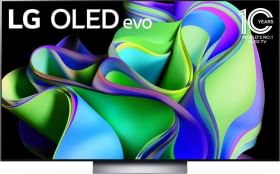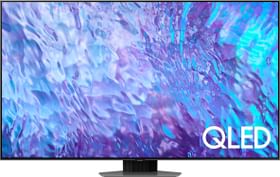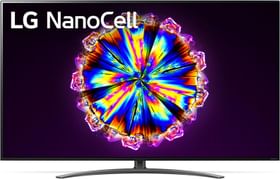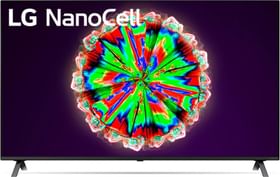Quantum Dot OLED TVs are expected to finally go real by the end of 2021. As the name suggests, these TVs will use Quantum Dot technology to enhance and improve the existing OLED panels.
How exactly are QD-OLED displays different from current OLED displays manufactured by LG Displays and from Samsung’s existing QLED TVs? This year we witnessed a surge in mini LED TVs which will be priced a little below OLED TVs. So let’s compare these different TV technologies to better understand which one is better and why.
OLED on TVs and OLED on Phones are not the same
To understand the difference between these display technologies and why they exist, it must first be cleared that the OLED displays on TVs are not the same as OLED displays on phones.
On your phones, the OLED panels have red, green, and blue subpixels that are self-emissive or emit their own red, green, and blue light – and can be individually powered on or powered off.
Making similar OLED panels for large TVs with individual Red, Green and Blue subpixels, however, poses several manufacturing and longevity challenges. In fact, only one such TV was ever launched – the Samsung KE55S9C 55-inch UHD OLED- which was introduced in 2013.

Samsung KE55S9C 55-inch UHD OLED TV with true RGB colors
The technology wasn’t scalable for larger resolution or bigger displays and thus Samsung shifted to Quantum Dots based QLED technology for its premium TVs.
Meanwhile, LG Displays developed OLED for TVs where all subpixels are white and not RGB.
The white OLED light is achieved by using Blue and Yellow substrate. Different colors for four sub-pixels (R, G, B, W) are achieved by using a RGBW color filter layer over the essentially white OLED subpixels. This works because a single color OLED panel is easier to manufacture and decays uniformly – which is to say that your TV will age to be less bright but the backplane light shall still remain uniformly blue or uniformly yellow.
The color filter film used in front of OLED subpixels, however, is not an ideal solution. The filters work by blocking particular colors of light thus reducing brightness, and as the Blue OLED material decays over time, Red, Green, and Blue colors are affected differentially (the decay is not the same for all three colors resulting in color shifts, burn-in and other issues).
QD OLED or Quantum Dot OLED TVs aim to fix these issues by using a quantum dots layer for color conversion instead of a color filter.
Also Read: Best 4K TVs to buy in India
What are Quantum Dots and why they are better than color filters?
Quantum dots are small nanocrystals. When a high-energy light photon strikes quantum dots, they absorb it and emit a new photon. The color of this emitted photon depends on the size of the quantum dot – so manufacturers have to use the same material (just different sizes) for all colors, which makes manufacturing simpler and helps with uniform aging.

In TVs, Quantum Dots are excited by higher energy or lower wavelength light than the emission color of the dot. To excite green and red color quantum dots, TV manufacturers thus use blue light and for blue subpixels, they let the blue light pass through as-is.
The same result can perhaps be obtained by using blue, red and green quantum dots and exciting them using ultraviolet light. However, Blue quantum dots are not as easy to develop as green and red (Samsung does have blue Quantum dot technology, but it is not yet being used commercially).

Quantum dots act as an excellent color converter and have almost 100 percent quantum efficiency. Thus unlike color filters, the Quantum dots layer doesn’t block lights of particular wavelengths or colors and let the entire luminance pass through.
QD-OLED vs OLED: Why QD-OLED displays are better


As mentioned above, color conversion in QD-OLED displays is done by quantum dots that are placed or patterned at a sub-pixel level over Blue OLEDs.
So, we have a blue emissive layer in the backplane where all pixels are blue. And then green and red quantum dot materials are printed on pixels that are needed to be green or red.

Colors are converted on red sub-pixels by red quantum dots and green sub-pixel by green quantum dots. Using this technology, the end result is similar to what you’d get with individual Red, Green, and Blue sub-pixels as with AMOLED displays on phones.

Quantum Dots as color converters are highly efficient and way better than color filters that can block up to 60% light.
Another benefit of this implementation over color filter is that as the Blue OLED lights get dimmer with time, the red and green light getting out of the quantum dots will dim proportionally.
So, over the lifetime of your TV, its display may get less bright but colors shall remain mostly unaffected. The use of Quantum dot also helps with wider color gamuts with fewer image artifacts, better brightness, and better HDR.
OLED TVs today use LG Display panels that have a white pixel along with red, green, and blue sub-pixels (and are also referred to as White OLED). This is used for enhancing brightness but reduces color vibrance. Upcoming QD-OLED panels will, in a way, re-instate RGB OLED with deeper, brighter, and more vibrant colors.
OLED technology is known to have problems with aging, but the current crop of OLED TVs handle this remarkably well. There are negligent chances that users will face issues like OLED burn-ins over a life span of 5 to 8 years.
Disadvantages of QD-OLED Displays
We discussed a few theoretical advantages of QD OLED above and let’s now talk about some disadvantages of the technology.
Samsung is currently developing QD OLED panels that we will see in the first wave of QD OLED televisions and they won’t be perfect.
One problem is that Quantum dots on the QD OLED TVs get excited by UV light falling on the TV from the outside. Secondly, Quantum Dot color conversion materials don’t always capture the entire blue light that is used to excite them and some of it may bleed into Red and Green subpixels.
To counter these problems, Samsung Displays is likely to use some sort of color filter which is likely to be eliminated as we progress to second or third-generation QD-OLED panels. It remains to be seen how much brightness penalty is incurred meanwhile.
QLED vs QD-OLED: What’s different?

Now that we have discussed how Quantum dots are enhancing existing OLED TVs, you might be wondering how the Quantum Dot technology is implemented on existing Samsung QLED TVs.
Unlike QD-OLED TVs, QLED TVs use Quantum dots as a backplane technology behind the LCD.
A QLED TV works just like LCD TVs, but a Quantum Dot Enhancement Film( QDEF) is used in front of the Blue LED backlight to convert portions of the blue light to Red and Green in order to get pure White light. This helps enhance brightness and achieve a wider color gamut for better HDR performance.
QLED TVs are better at avoiding the backlight bleed into the display colors as compared to conventional LED or mini LED TVs. Samsung’s high-end QLED models can also get brighter than TV OLED displays. Color conversion is still done using a color filter in front of the LCD module.
And what about Mini LEDs?
LED TVs don’t have self-emissive pixels and it’s not possible to turn off individual pixels. The LCD substrate merely blocks the white light from the backlight to portray blacks, resulting in slightly greyish blacks more noticeable in dark ambiance. The contrast and black level can however be improved by turning off a portion or zone of the backlight.
That’s where mini LED TVs come in. These TVs have an array of mini LEDs behind the screen which can be individually turned off for a section of the screen. These mini LEDs don’t map pixels one to one, but having more zones helps with better local dimming control and thus enhances quality over conventional edge-lit LED displays.
Manufacturers are working on adding quantum dot enhancements to microLED backlighting as well (similar to QD enhancements in QLED TVs).
When will we see QD OLED TVs?
Samsung Displays is manufacturing QD-OLED displays but Samsung Electronics isn’t keen on adopting the technology. That’s because Samsung has been marketing QLED as superior to OLED panels for years and transitioning back to OLED or OLED-based TVs will make them lose face.
QD OLED panels are however being provided to a number of other manufacturers including Sony and we will most probably see QD-OLED TVs in 2021.
































